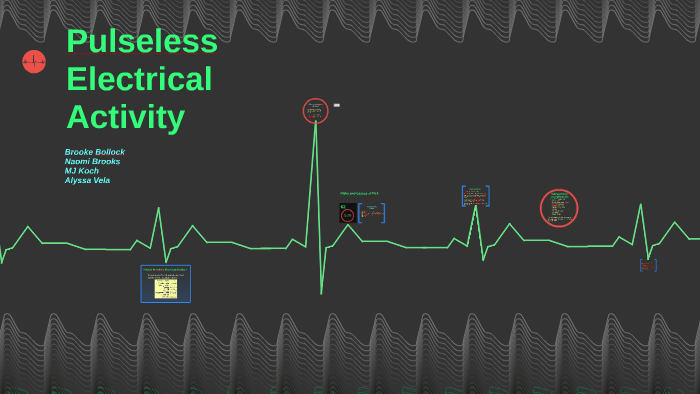

Asystole, pulseless electrical activity (PEA, formerly known as electromechanical dissociation) (Fig. Call 911 and begin CPR immediately if you encounter someone who appears to be experiencing PEA. Cardiac arrest rhythms and electrical shock. Now test your knowledge with this Pulseless Electrical Activity (PEA) Quiz.Īmerican Heart Association | Algorithms. Pulseless electrical activity (PEA )is a life threatening heart arrhythmia. Tachycardia (>100bpm) caused by irregular electrical impulses in the ventricles. Think of the H’s and T’s: hypovolemia, hypoxia, toxins, thrombosis and so forth. Pulseless Ventricular Tachycardia (pVT/VT). Other treatment includes supporting the airway.Īs the patient is resuscitated it’s important to think of a potential cause of the rhythm.

Medications that can be administered are Epinephrine. When necessary, it provides an electric shock that corrects an abnormal heart rhythm and prevents sudden cardiac death. It can turn into asystole if not treated right away. An implantable cardioverter defibrillator (ICD) is a heart monitoring device. of ECMO placement during CPR: asystole, PEA and shockable rhythm. This is when you have electricity in your heart, but it doesn’t pump normally. It’s important to note that Pulseless Electrical Activity (PEA) is a non-shockable rhythm. Most current recommendations for ECPR do not include patients. When help arrives follow ACLS algorithm recommendations. pPEA is used to describe a patient who has a supposed PEA in the absence of pulse, with evidence of some cardiac activity on the bedside ultrasound 4.
DO YOU SHOCK PULSELESS ELECTRICAL ACTIVITY CODE
When you confirm the patient is experiencing PEA, get help by activating emergency response system (call a code blue etc.) and start CPR. The growing adoption of bedside ultrasound allowed to classify PEA in two groups: the true pulseless electrical activity (PEA) and the pseudo-pulseless electrical activity (pPEA). Treatment for Pulseless Electricial Activity (PEA) Hypovolemia ( shock), hypoxia, electrolyte imbalance (example high or low potassium), thrombosis, some type of trauma, cardiac disease etc.

Causes of Pulseless Electrical Activity (PEA) This rhythm is a great example of why you can’t always trust the ECG monitor and must check the patient for yourself. However, again when you go to check the patient, they will have NO pulse and be unresponsive. Pulseless electrical activity (PEA) is a cardiac. In addition, you may or may NOT see p waves and QRS complex. Learn and reinforce your understanding of Pulseless electrical activity. The organized presentation of this rhythm can vary in that you may see something on the ECG that looks like normal sinus rhythm, sinus bradycardia, sinus tachycardia etc.


 0 kommentar(er)
0 kommentar(er)
